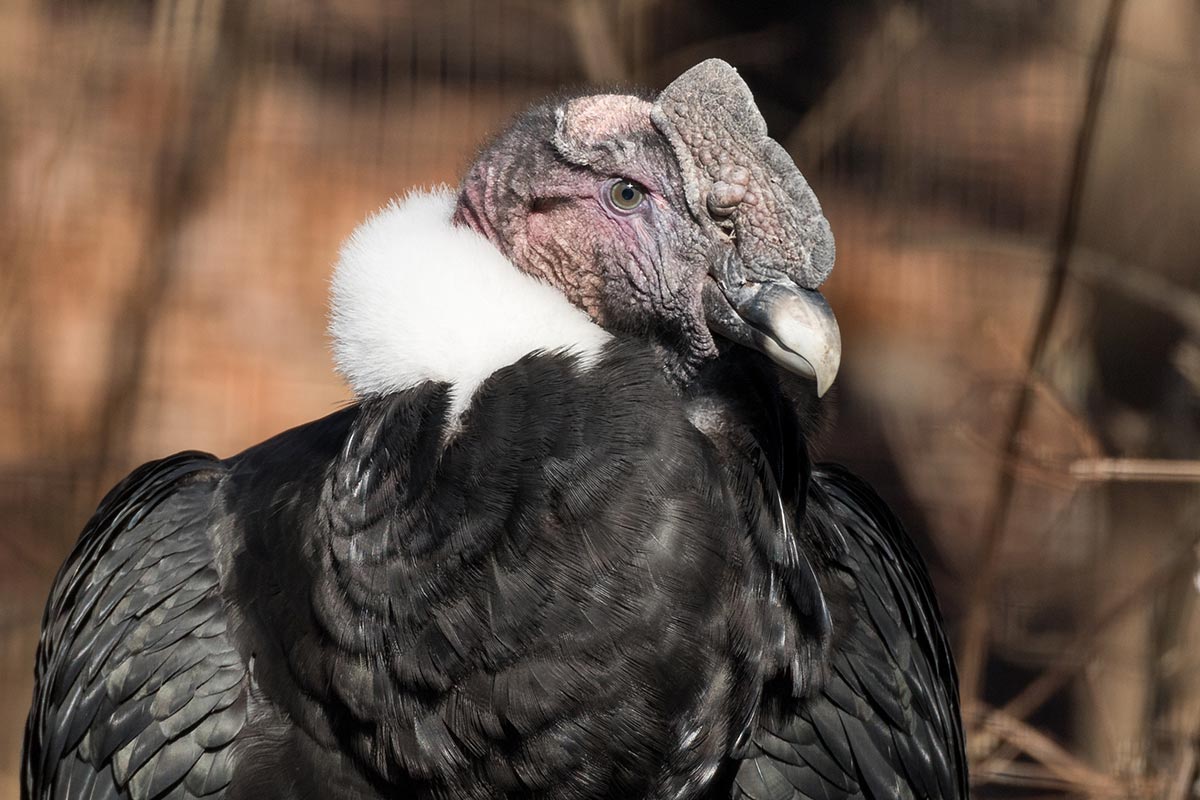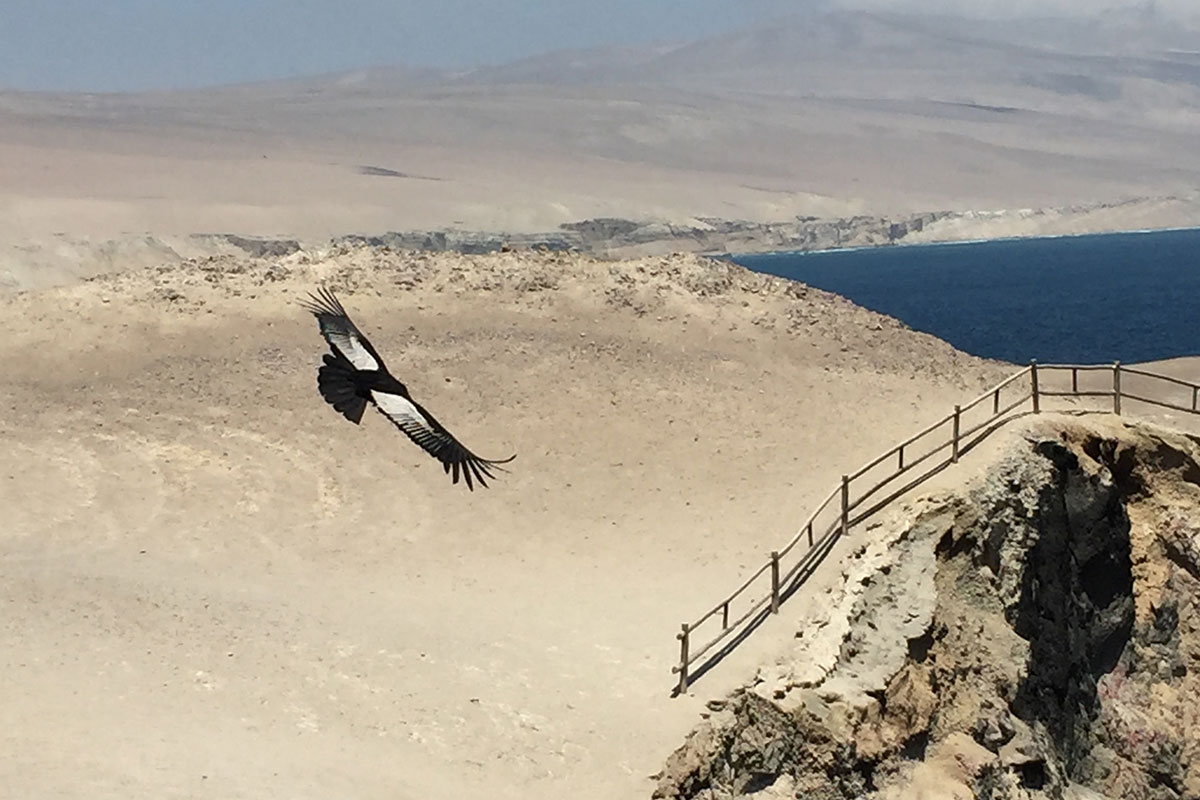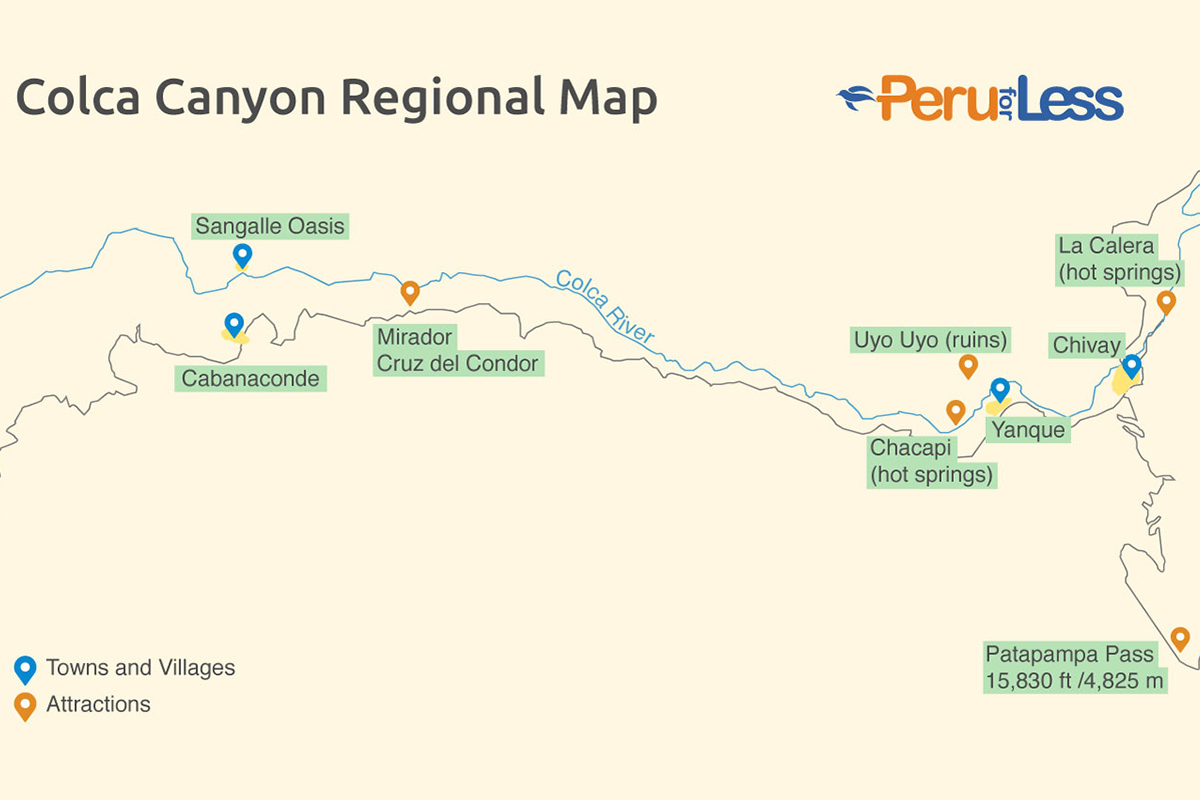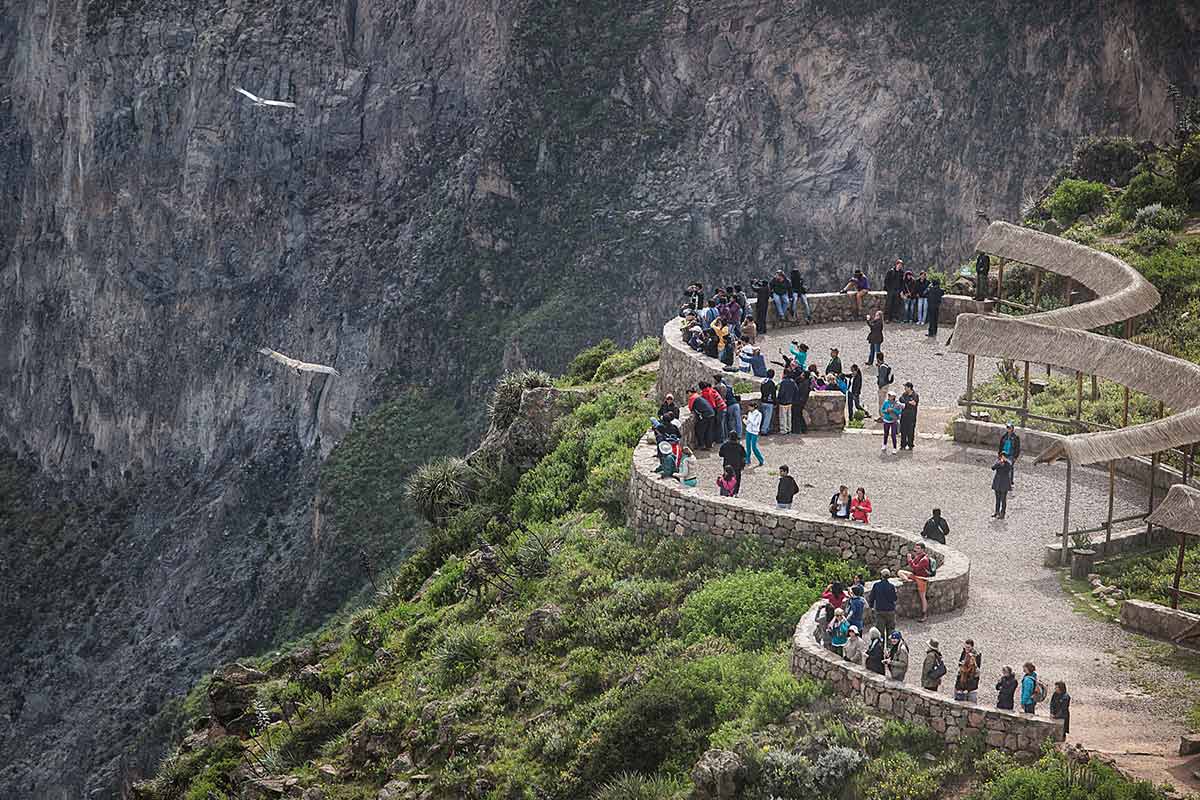 Behold the legendary Andean condor. Original photo by Peru For Less.
Behold the legendary Andean condor. Original photo by Peru For Less.Andean condors in Peru live in places with windy conditions where they can easily glide on air currents in search of their next meal. Despite what their name suggests, these majestic birds do not only inhabit high elevations in the Andes Mountains. They are also found in the lowland deserts, open grasslands, and the coast of Peru.
While bird sightings are never guaranteed, the following destinations are known for hosting Andean condors.

Male Andean condors have white neck feathers, while females do not. Photo by Eric Kilby on Flickr.

A giant condor soars over the coast in San Fernando National Park, Peru. Photo by Britt Fracolli.
Colca Canyon is the second-deepest canyon in the world and the most popular destination in Peru for close-range viewings of Andean condors.
Most visitors set off on a Colca Canyon tour from Arequipa, a beautiful colonial city. Arequipa is famous for buildings and churches built from a white volcanic material called sillar. In fact, the city’s historic plaza is a UNESCO World Cultural Heritage site.
Along the 3-hour drive from Arequipa to Colca Canyon, you pass highland landscapes and the Aguada Blanca National Vicuña Reserve . Here, herds of the elegant vicuña roam by the side of the road. Additionally, keep your eyes peeled for viscachas, native rodents that look much like rabbits, at the Patapampa Pass and lookout point.
Arequipa Tours:
Colca is fertile and inhabited, with extensive pre-Columbian terraces and unspoiled, traditional Andean villages. Chivay is where most tours start in earnest and the main town and the linking point between the two sides of Colca Canyon. The town is also home to a lively market, shops selling high-quality handicrafts, and a short walk from the hot springs of La Calera.
From Chivay, most tours head west through other small Andean villages and reach the grand finale at Mirador Cruz del Condor (10,000 ft, or 3,050 m).

Descending to deeper parts of the canyon, around a 1-hour drive from Chivay, you reach the Mirador Cruz del Condor. This iconic viewing platform is ideal for both amateur and professional birdwatching , and the best spot in Colca Canyon to regularly observe the legendary Andean condor.
The condor population is dwindling due to loss of habitat in parts of South America. But in Colca Canyon, visitors have the advantage of being able to see the birds at close range as they fly past the cliff-edges. May through December is the peak dry season for spotting condors in the region.

Condors soar gracefully over Colca Canyon. Original photo by Peru For Less.
The best time of day to observe condors at Cruz del Condor is between 9 am and 12 noon. Therefore, when it comes to condor-spotting, early birds get the proverbial worm. On-time arrival to the lookout point translates into a 4 am to 6:30 am departure from Chivay. Mirador del Condor is small and often overcrowded at peak hours.
The sight of condors soaring gracefully on thermal drifts is truly a once-in-a-lifetime experience. Contact our team of experts to begin planning an epic, custom trip to Colca Canyon, Peru, and any other destinations in Latin America to spot condors and other rare wildlife in South America.
*Article updated in July 2020.



Email: [email protected]
Sign up to receive our newsletter for great articles, stunning photos, and special deals.